Fibre Optics Spark
Technology
S.C.BASU
Notion Press
5 Muthu Kalathy Street, Triplicane,
Chennai - 600 005
First Published by Notion Press 2014
Copyright S.C.Basu 2014
All Rights Reserved.
ISBN: 978-93-84381-54-7
This book has been published in good faith that the work of the author is original. All efforts have been taken to make the material error-free. However, the publisher disclaim the responsibility.
No part of this book may be used, reproduced in any manner whatsoever without written permission from the author, except in the case of brief quotations embodied in critical articles and reviews.
PREFACE
In todays Information Age, the telecommunication industry has a vital presence and is an important contributor to the growth in GDP. The availability of adequate Telecom Infrastructure is the backbone of industrial and economic development in any country.
Optical fibres have played a key role in making possible the extraordinary growth in world-wide communications and are instrumental in enabling the proliferating use of the Internet. Apart from the telecommunication industry, optical fibres have paved the way for a whole new field of Surgery in Medical Technology. Telecom Industries impart direct benefits by the way of: Increased GDP, government revenues and employment in the country. They also indirectly lower transaction costs, offer health care, educational services, better access to information, increase productivity of business by means of voice and data services, etc. So, increased telecommunication penetration plays a key role in the propagation of socio-economical development.
The growth and improvement of Information and Communication Technologies are heavily dependent on Fibre-optic cables for their enormous information-carrying capacity, low cost, and immunity from the many disturbances that can afflict electrical wire and wireless communication links. Fibre-optic communications have contributed enormously in creating the Information Age. It has cemented the confidence and engenders the feeling of security among Internet service providers and carriers in the new world of developed and emerging economies.
The cited factors have influenced me to sketch an outline of what Fibre-optic communications are about. Hope this book will be of use to the lay reader as its content kicks off from the History of Discovery of Light, to the evolution of Optical Technology and its useful implementation in covering Worldwide Fibre-optic Submarine Cable Communications.
April 2014
Navi Mumbai S.C. Basu
Acknowledgements
I am extremely obliged to my beloved wife Tripti Basu, my two affectionate daughters Shalma Basu Patnaik, Dr. Shaoli Basu and close family members for their continuous inputs in terms of ideas that helped me pen the essence of the modern communication era in a few pages.
SYNOPSIS
Communication media is the backbone of Socio-Economical Development in any country. Information Technology plays a very significant role in the modern communication era, helping to build rapid progress in any field. Worldwide communications solely depend on Fibre-optic Technologies and in turn, on Submarine Fibre-optic Cable Networks. This book briefly covers all important aspects; those that are truly instrumental in understanding the overall technological scenario. The chapters are arranged, starting from the history, moving on to the basic characteristics of light, and consequently to its modern form for presenting the essence of the subject clearly to enthusiastic readers.
To draw out the concept of Fibre-optic communications clearly, the topics focused on are:
 History - Light rays emanated from a persons eye. Light follows Wave-particle duality and the front runners to demonstrate Light and Fibre-optic technology.
History - Light rays emanated from a persons eye. Light follows Wave-particle duality and the front runners to demonstrate Light and Fibre-optic technology.
 Characteristics of Light draws attention to the Physics behind this unique technology to pave the way for Optical Fibres.
Characteristics of Light draws attention to the Physics behind this unique technology to pave the way for Optical Fibres.
 The Telecommunications chapter expresses the types of communication media in vogue against a backdrop of old technologies used.
The Telecommunications chapter expresses the types of communication media in vogue against a backdrop of old technologies used.
 Optical Fibre & Fibre-optic Cables elaborated - Evolution, characteristics, modes and structures of Fibre, citing Intrinsic Losses and the steps adopted to overcome attenuation.
Optical Fibre & Fibre-optic Cables elaborated - Evolution, characteristics, modes and structures of Fibre, citing Intrinsic Losses and the steps adopted to overcome attenuation.
 Optical Fibre Standardization is a very essential aspect, responsible for studying technical, operational and tariff related queries and issuing recommendations, on a worldwide basis .
Optical Fibre Standardization is a very essential aspect, responsible for studying technical, operational and tariff related queries and issuing recommendations, on a worldwide basis .
 Expansion of Technology imparts know-how to achieve - Increase in Bandwidth by Wavelength-Division Multiplexing (WDM) & Dense WDM, utilization of Non-linear Characteristics in Fibre, the Physics of Optical Amplifiers - EDFA.
Expansion of Technology imparts know-how to achieve - Increase in Bandwidth by Wavelength-Division Multiplexing (WDM) & Dense WDM, utilization of Non-linear Characteristics in Fibre, the Physics of Optical Amplifiers - EDFA.
 Un-cabled Fibre provides an idea of Mechanical / Fusion Splicing, Fibre Fusion Splicer and Connectors, used in applications to gain flexibility in routing an optical signal from lasers to receivers, wherever reconfiguration is necessary, and in terminating cables.
Un-cabled Fibre provides an idea of Mechanical / Fusion Splicing, Fibre Fusion Splicer and Connectors, used in applications to gain flexibility in routing an optical signal from lasers to receivers, wherever reconfiguration is necessary, and in terminating cables.
 Measuring Instruments deals with the Principle of operation and uses of Optical Time Domain Reflectometer (OTDR), as part and parcel to estimate the fibres length and overall attenuation, including splice and mated-connector losses in the Fibre-optic link.
Measuring Instruments deals with the Principle of operation and uses of Optical Time Domain Reflectometer (OTDR), as part and parcel to estimate the fibres length and overall attenuation, including splice and mated-connector losses in the Fibre-optic link.
 Current & Future Trend associates with the idea of development in long distance optical submarine cable systems which deploy Dispersion Management Fibres (DMFs) and include the revolutionary discovery of Optical Soliton, a bell-shaped pulse formed by balancing two opposing factors - Group-velocity dispersion and non-linearity.
Current & Future Trend associates with the idea of development in long distance optical submarine cable systems which deploy Dispersion Management Fibres (DMFs) and include the revolutionary discovery of Optical Soliton, a bell-shaped pulse formed by balancing two opposing factors - Group-velocity dispersion and non-linearity.
 Submarine Cable Communications topic highlights History, Technology, Laying of Submarine Cable, Cable Landing Point and a few mention-worthy Submarine Cable Networks.
Submarine Cable Communications topic highlights History, Technology, Laying of Submarine Cable, Cable Landing Point and a few mention-worthy Submarine Cable Networks.
 Data Transportation over Optical Fibre comprises Plesiochronous Digital Hierarchy (PDH), Synchronous Digital Hierarchy (SDH), Comparisons therein, STM1 Frame structure, Pointer principle, Path overheads and Higher order multiplexing to understand transfer of multiple digital bit streams over optical fibre according to a set of standard protocols, interfacing different optical networks.
Data Transportation over Optical Fibre comprises Plesiochronous Digital Hierarchy (PDH), Synchronous Digital Hierarchy (SDH), Comparisons therein, STM1 Frame structure, Pointer principle, Path overheads and Higher order multiplexing to understand transfer of multiple digital bit streams over optical fibre according to a set of standard protocols, interfacing different optical networks.
 It would have been incomplete without the Pioneers Fibre optic Communications chapter, which attributes all achievements to: The Father of Fibre Optics with Noble Laureates, for their overwhelming discoveries in optical communications through fibre and for the CCD sensor.
It would have been incomplete without the Pioneers Fibre optic Communications chapter, which attributes all achievements to: The Father of Fibre Optics with Noble Laureates, for their overwhelming discoveries in optical communications through fibre and for the CCD sensor.
Source (Photo of Cover pages) : Undersea communications cables, 2009.Courtesy:
Tyco Telecommunications (US) Inc., tech.fortune.cnn.com, undersea cables - Fortune Tech. & 2003 Monterey Bay Aquarium and Research Institute (MBARI).
Contents


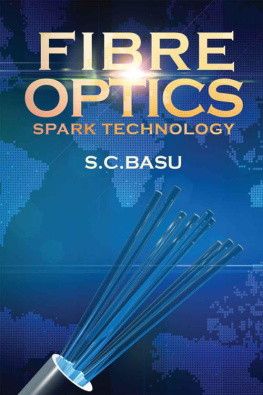





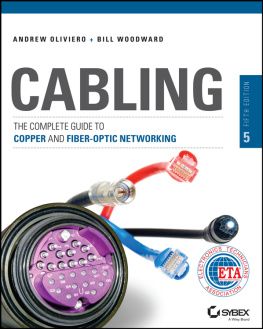
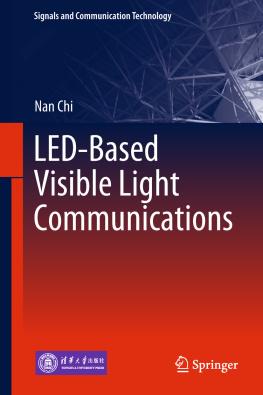
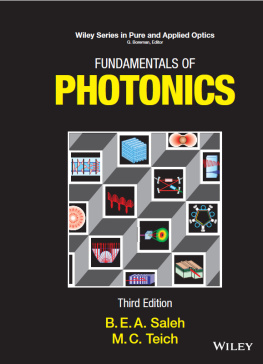
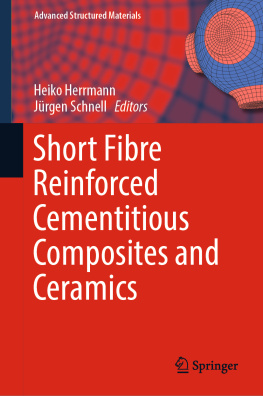


 History - Light rays emanated from a persons eye. Light follows Wave-particle duality and the front runners to demonstrate Light and Fibre-optic technology.
History - Light rays emanated from a persons eye. Light follows Wave-particle duality and the front runners to demonstrate Light and Fibre-optic technology.